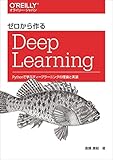AIが古代ギリシャの石板の文章復元を支援する
AI is helping scholars restore ancient Greek texts on stone tablets
ちょっと直訳的になりすぎていて曖昧なところが残っていますが、とりあえず。

Image Credits: DEA / ARCHIVIO J. LANGE / Contributor / Getty Images
Machine learning and AI may be deployed on such grand tasks as finding exoplanets and creating photorealistic people, but the same techniques also have some surprising applications in academia: DeepMind has created an AI system that helps scholars understand and recreate fragmentary ancient Greek texts on broken stone tablets.
機械学習とAIは、系外惑星の発見や実在しない人の写真を作り出すことのような素晴らしい仕事に展開されるかもしれません。 しかし、同じ技術が学会においては少々驚きの応用がなされます。 DeepMindは、あるAIシステムを創り出しました。 それは、壊れた石板に書かれた断片的な古代ギリシャ文字の文章を、学者が理解し復元することを支援するものです。
- grand - 素晴らしい
- photorealistic - 写実的な
- fragmentary - 断片的な
These clay, stone or metal tablets, inscribed as much as 2,700 years ago, are invaluable primary sources for history, literature and anthropology. They’re covered in letters, naturally, but often the millennia have not been kind and there are not just cracks and chips but entire missing pieces that may comprise many symbols.
これらの粘土板、石板、あるいは金属板は、2700年前に刻まれており、歴史上、かけがえのない一次資料です。
- inscribed - 刻まれた
- invaluable - かけがえのない
- primary sources - 一次資料
Such gaps, or lacunae, are sometimes easy to complete: If I wrote “the sp_der caught the fl_,” anyone can tell you that it’s actually “the spider caught the fly.” But what if it were missing many more letters, and in a dead language, to boot? Not so easy to fill in the gaps.
隙間や欠けた部分のようなものを完全にするのは、時に簡単です。 もしもワタシが「ライ○ンがシマ○マをつかまえた」と書いたとしても、誰でもそれが「ライオンがシマウマをつかまえた」と説明できるでしょう。 しかし、もっと多くの文字がかけていたら?さらにそれが失われた言語だとしたら?それでもできます? その穴を埋めるのはそう簡単ではありません。
- gaps - 隙間、溝、切れ目
- lacunae - くぼみ。欠けた所
- to boot - それでも、そのうえ
Doing so is a science (and art) called epigraphy, and it involves both intuitive understanding of these texts and others to add context; one can make an educated guess at what was once written based on what has survived elsewhere. But it’s painstaking and difficult work — which is why we give it to grad students, the poor things.
それをやるのがエピグラフィと呼ばれる科学(と芸術)であり、これら文章の直感的な理解と、その他には文脈を追加するようなことの両方を改善します。 他の場所で残ったものに基づき、一度書かれたものに対して、経験豊富な推測ができるひとがいます。 しかし、これは大変骨の折れる難しい作業です。なので我々は大学院生にそれを与えるのです。可哀想なことです。
- intuitive - 直感的な
- educated guess - 経験豊富な推測
- painstaking - 骨の折れる
Coming to their rescue is a new system created by DeepMind researchers that they call Pythia, after the oracle at Delphi who translated the divine word of Apollo for the benefit of mortals.
彼らを救うためにやってきたのはDeepMindの研究者たちが作った、彼らがPythiaと呼ぶ、新しいシステムです。 死すべき人間の利益のために、アポロの神聖な言葉を翻訳したデルフォイの神託にちなんで名付けられました。
The team first created a “nontrivial” pipeline to convert the world’s largest digital collection of ancient Greek inscriptions into text that a machine learning system could understand. From there it was just a matter of creating an algorithm that accurately guesses sequences of letters — just like you did for the spider and the fly.
このチームは最初、古代ギリシャの碑文の世界一大きなデジタルコレクションを機械学習システムが理解可能な文章に変換するために「自明でない」パイプラインを作りました。その後は、文字のつながりを正確に推測する ― ちょうどライオンとシマウマでやったように ― アルゴリズムを作るだけでした。
- nontrivial - 自明でない
- inscriptions - 碑文
PhD students and Pythia were both given ground-truth texts with artificially excised portions. The students got the text right about 57% of the time — which isn’t bad, as restoration of texts is a long and iterative process. Pythia got it right… well, 30% of the time.
博士課程の学生とPythiaの両方に、人為的に切り取られた部分によって真実の文章が与えられました。 この学生は正しい文章をだいたいその時間の57%で手に入れました ― これは悪くはありません。文章の復元は長く繰り返しの多い処理ですから。 Pythiaは、ええ、その時間の30%でした。
- restoration - 復元
But! The correct answer was in its top 20 answers 73% of the time. Admittedly that might not sound so impressive, but you try it and see if you can get it in 20.
しかし、正解は、その時73%の上位20の答えの中にありました。 確かに、それはそれほど印象的ではないかもしれません。しかし、もし20位以内になれるのであればやってみてください。
- Admittedly - 確かに
The truth is the system isn’t good enough to do this work on its own, but it doesn’t need to. It’s based on the efforts of humans (how else could it be trained on what’s in those gaps?) and it will augment them, not replace them.
真実としては、このシステムがこの仕事をするには十分ではないということですが、それは必要なことではありません。 それは人間の取り組みに基づいており(他の人はこれらの穴埋めについてどのように訓練され得るでしょう?)、これは拡張されるでしょう。置き換えられるのではありません。
Pythia’s suggestions may not be perfectly right on the first try very often, but it could easily help someone struggling with a tricky lacuna by giving them some options to work from. Taking a bit of the cognitive load off these folks may lead to increases in speed and accuracy in taking on remaining unrestored texts.
Pythiaの示唆は、最初の挑戦で完全に正しいものにはならなかったかもしれませんが、仕事のためにいくつかの選択肢を与えることで、誰かがトリッキーな穴へ取り組むことを簡単に支援できるはずです。 この彼らの負荷を下げるというちょっとした認知を得ることは、彼らがまだ復元されていない文章を引き受ける時に速度と精度を良くするように導くかもしれません。
- load off - 荷を下ろす
The paper describing Pythia is available to read here, and some of the software they developed to create it is in this GitHub repository.
このPythiaに言及している論文はここで読めます。 そして、彼らがそれを作るために開発したいくつかのソフトウェアはこのGitHubリポジトリにあります。
元記事は以下からどうぞ。


